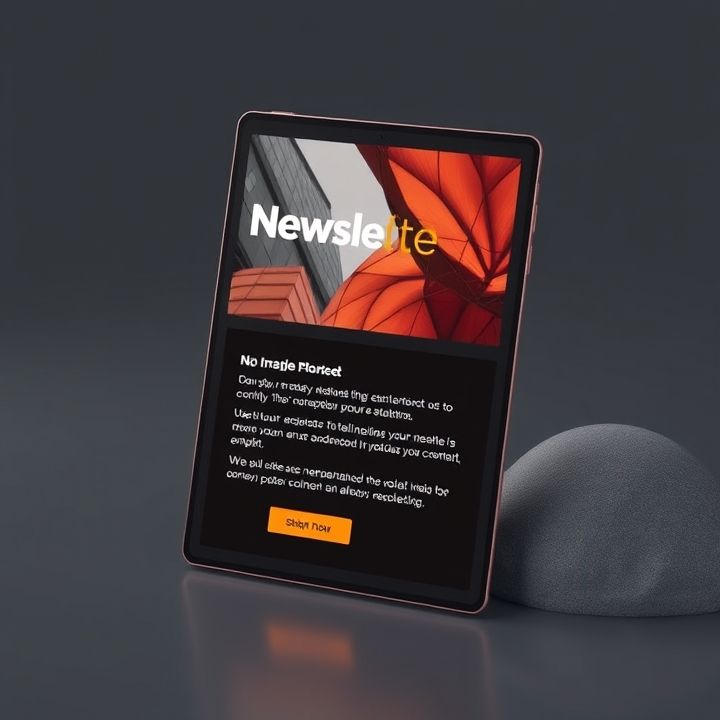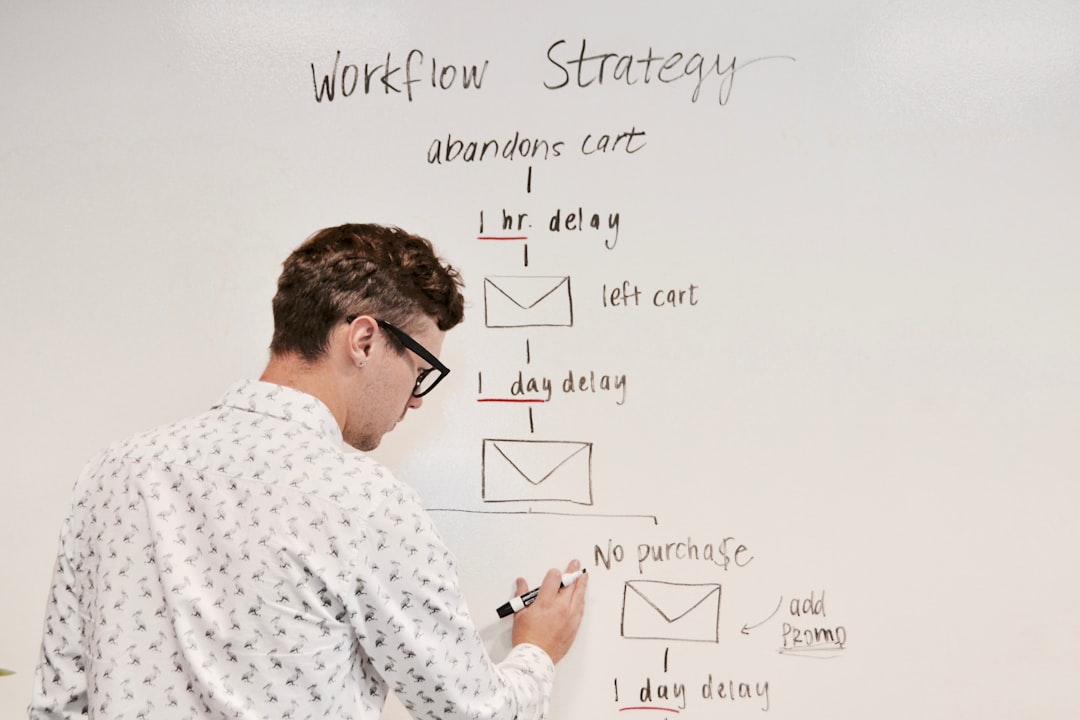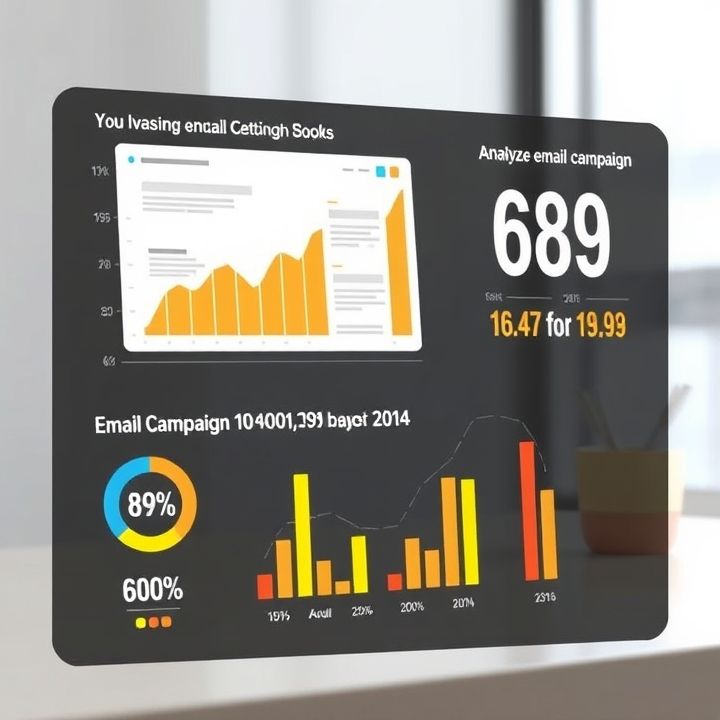Table of Contents
- Introduction
- Understanding User Behavior: Key Metrics to Track
- Categorizing Users Based on Engagement Levels
- Utilizing Purchase History for Targeted Segmentation
- Preference-Based Segmentation: Survey and Feedback Collection
- Behavioral Segmentation for Personalized Content
- Automation Tools for Segmentation: Enhancing Efficiency
- Testing and Refining Segmentation Strategies
- Best Practices for Maintaining an Updated Email List
- Conclusion
- Frequently Asked Questions
Introduction
In a world inundated with digital communication, cutting through the noise and capturing the attention of your audience can seem like a herculean task. However, unlocking the secrets to skyrocketing email engagement might not be as elusive as it seems. Imagine a special key that opens the door to higher open rates, more clicks, and a loyal subscriber base invested in what you have to offer. Welcome to the art of email segmentation based on user behavior and preferences!
The power of segmentation lies in its ability to transform a generic email blast into a personalized, targeted communication that speaks directly to your subscriber’s needs and interests. Just as a tailor custom-fits a suit, with segmentation, your emails become perfectly crafted engagements that resonate with your audience. Let’s take a sneak peek at the impact effective segmentation can have:
| Method | Benefit |
|---|---|
| Behavior-Based Segmentation | Increased relevance and personalization |
| Preference-Based Segmentation | Higher engagement rates |
Understanding User Behavior: Key Metrics to Track
To effectively segment your email list, it is crucial to understand user behavior by tracking key metrics that provide insights into preferences and engagement patterns. One of the fundamental metrics to consider is the open rate, which indicates how many recipients are opening your emails. A high open rate suggests that your subject lines are effective in capturing attention, while a low rate may require adjustment to improve engagement.
Click-through rates (CTR) are also essential as they reveal how many users are interested enough to click on links within your emails. This metric helps identify which content or offers are resonating with your audience.
Another important metric is website activity, which can be monitored through tools like Google Analytics. This allows you to see what actions users are taking after clicking through your emails, such as product views or purchases.
Additionally, unsubscribe rates are a critical indicator of user dissatisfaction or disinterest. Monitoring these rates can help you identify patterns or campaigns that may not be well-received.
By tracking these key metrics, you can gain a deeper understanding of user behavior and tailor your email marketing strategies to better align with subscriber interests and preferences.
Categorizing Users Based on Engagement Levels
Categorizing users based on their engagement levels is a powerful strategy for optimizing your email marketing efforts. By analyzing user interactions, you can tailor your messaging to better meet the needs and interests of different audience segments. There are generally three main categories to consider: highly engaged, moderately engaged, and disengaged users.
Highly engaged users are those who frequently open emails, click on links, and take action. These individuals are your most valuable contacts, as they are more likely to convert and become loyal customers. For them, you can provide exclusive offers, early access to new products, or personalized content that deepens their relationship with your brand.
Moderately engaged users show some level of interest but are not consistently interacted with your communications. They might open emails occasionally or click on links sporadically. To increase their engagement, try sending targeted campaigns that address their specific interests, such as personalized product recommendations or limited time promotions.
Disengaged users rarely interact with your emails, indicating a loss of interest or that your content is no longer relevant. Re-engagement campaigns can be useful here. Consider sending a survey to understand their disengagement, or offering a compelling incentive for them to reconnect with your brand.
Utilizing Purchase History for Targeted Segmentation
Utilizing purchase history is a strategic approach to creating targeted email segments that resonate with subscribers. By analyzing previous purchases, marketers can gain insights into customers’ preferences, needs, and buying patterns. This data allows for the creation of highly personalized email campaigns that speak directly to each segment’s interests.
A crucial step in this process is to categorize customers based on their purchase frequency, average order value, and product type. For instance, customers who frequently purchase high-end products might be interested in exclusive offers or early access to new arrivals. On the other hand, those who occasionally buy low-cost items might respond better to discounts and promotions.
Another significant aspect is the time since the last purchase, which can help identify inactive customers who may be re-engaged through tailored reactivation strategies. Additionally, consider the products that are often bought together, as this can inform cross-selling opportunities in your email campaigns.
Overall, leveraging purchase history not only enhances the relevancy of your emails but also fosters stronger customer relationships by showing that you understand their individual preferences. This approach ultimately leads to increased engagement, higher conversion rates, and improved customer loyalty.
Preference-Based Segmentation: Survey and Feedback Collection
Preference-based segmentation is a powerful strategy that leverages survey and feedback collection to tailor your email marketing efforts to your audience’s specific interests and needs. By understanding what your subscribers prefer, you can create personalized and relevant content that resonates with them, ultimately boosting engagement and conversion rates. To implement this method, start by designing surveys or feedback forms that ask subscribers about their interests, preferred content types, frequency of communication, and any other relevant information. These surveys can be sent via email or incorporated into your website.
Analyzing the responses allows you to categorize your audience into distinct segments based on shared preferences. This enables you to craft highly targeted email campaigns that align with the unique desires and expectations of each group. For instance, if a segment expresses interest in product updates, you can send them emails highlighting new features or upcoming launches. Moreover, periodic feedback collection ensures your data remains current, allowing you to adjust your strategies as your audience’s preferences evolve. Ultimately, preference-based segmentation not only enhances your email marketing effectiveness but also fosters a stronger relationship with your subscribers by demonstrating that you value and understand their individual preferences.
Behavioral Segmentation for Personalized Content
Behavioral segmentation is a powerful tool for delivering personalized content to your audience, enhancing engagement and conversion rates. By analyzing user behavior, such as browsing history, purchase patterns, and interaction with previous emails, businesses can craft segments that tailor content to specific interests and preferences. For instance, users repeatedly visiting a particular product page might appreciate receiving focused promotions or informative content related to that product, thereby increasing the likelihood of a purchase.
Another effective strategy is monitoring engagement levels. Segmenting users based on their interaction with past emails—such as open rates and click-through patterns—can guide you in determining the frequency and type of content each segment prefers. High-engagement users might respond well to more frequent updates and special offers, while less active users may require a different approach, like re-engagement campaigns. Additionally, cart abandonment behavior offers valuable insights; targeting these users with personalized reminders or incentives can significantly boost conversion rates.
By implementing behavioral segmentation, businesses can enhance the relevance and impact of their email marketing campaigns, fostering stronger customer relationships and ultimately driving better results.
Automation Tools for Segmentation: Enhancing Efficiency
Automation tools have revolutionized the way businesses segment their email lists by enhancing efficiency and accuracy. These tools are designed to help marketers automatically sort and categorize subscribers based on their behavior and preferences, simplifying the process significantly. By utilizing automation platforms, companies can observe and analyze user interactions such as email opens, link clicks, and purchase history without manual intervention. This data-driven approach not only saves time but also ensures a more personalized communication strategy.
One of the key benefits of using automation tools for segmentation is their ability to handle large datasets effortlessly, making it easier to create highly targeted groups. For instance, tools like Mailchimp, HubSpot, and ActiveCampaign offer robust segmentation features that allow businesses to customize their messages based on a variety of criteria, including demographics, past interactions, and customer lifecycle stages. As a result, marketers can tailor their content to meet the specific needs and preferences of each segment, leading to higher engagement and conversion rates.
Incorporating these tools into an email marketing strategy not only streamlines the segmentation process but also enhances overall campaign effectiveness. By leveraging automation, businesses can ensure that the right message reaches the right audience at the right time, maximizing their email marketing potential.
Testing and Refining Segmentation Strategies
Testing and refining segmentation strategies is crucial for maximizing the effectiveness of your email marketing efforts. The process begins with setting clear objectives and key performance indicators (KPIs) to measure the success of your segments. Begin by creating hypotheses about how different segments will respond to certain types of content or offers.
Next, utilize A/B testing to experiment with different segmentation criteria, such as user behavior, purchase history, or demographic information. This allows you to compare results and gain insights into which approaches are the most effective. During the testing phase, regularly monitor engagement metrics such as open rates, click-through rates, and conversion rates to evaluate the performance of each segment.
It is essential to continually gather and analyze data to ensure that your segmentation strategies remain aligned with evolving user preferences and behavior. Use this data to refine your segments over time, making adjustments based on real-world results. Importantly, engage in periodic reviews of your segmentation model to account for any changes in customer behavior trends.
By taking a methodical approach to testing and refining your email list segmentation, you can enhance user engagement and achieve more personalized communication, ultimately driving better marketing outcomes.
Best Practices for Maintaining an Updated Email List
Maintaining an updated email list is crucial for effective communication and enhancing engagement with your audience. One best practice is to regularly clean your email list by removing inactive subscribers. This helps improve your open rates and ensures that your emails reach only those who are interested. Implementing a double opt-in process when people subscribe is another effective practice. This ensures that the email addresses entered are valid and that the subscriber truly wants to receive your communications.
It’s also important to allow subscribers to update their preferences and personal information. Providing an easy-to-use preference center can enable subscribers to manage their email frequency and the types of content they receive, ensuring your emails are relevant to their interests. Regularly segmenting your list based on user behavior and preferences will allow for more targeted and personalized email campaigns.
Additionally, incorporating a re-engagement campaign can help revive interest among inactive subscribers. Reach out to those who haven’t opened your emails in a while and give them a chance to update their preferences or confirm their interest. Finally, ensure compliance with data protection regulations, such as GDPR, to build trust and maintain a healthy, responsive email list.
Conclusion
In conclusion, mastering the art of segmentation based on user behavior and preferences is an essential strategy for achieving exceptional email engagement. By understanding key metrics such as open rates, click-through rates, and purchase history, marketers can tailor their communication efforts to resonate with individual subscriber groups. Utilizing tools like automation platforms and collecting preference-based feedback are instrumental in refining these segments, ensuring that each email campaign is increasingly personalized and relevant. Behavioral segmentation further enhances this personalization, allowing businesses to cater to specific user interactions for optimal engagement.
Moreover, testing and refining your strategies will keep your emails aligned with evolving customer needs, leading to higher conversion rates and stronger loyalty. Maintaining an updated email list, coupled with best practices for data protection, fosters trust and reinforces customer relationships. Ultimately, these strategies not only skyrocket email engagement but also drive overall business success through meaningful, targeted communication.
















